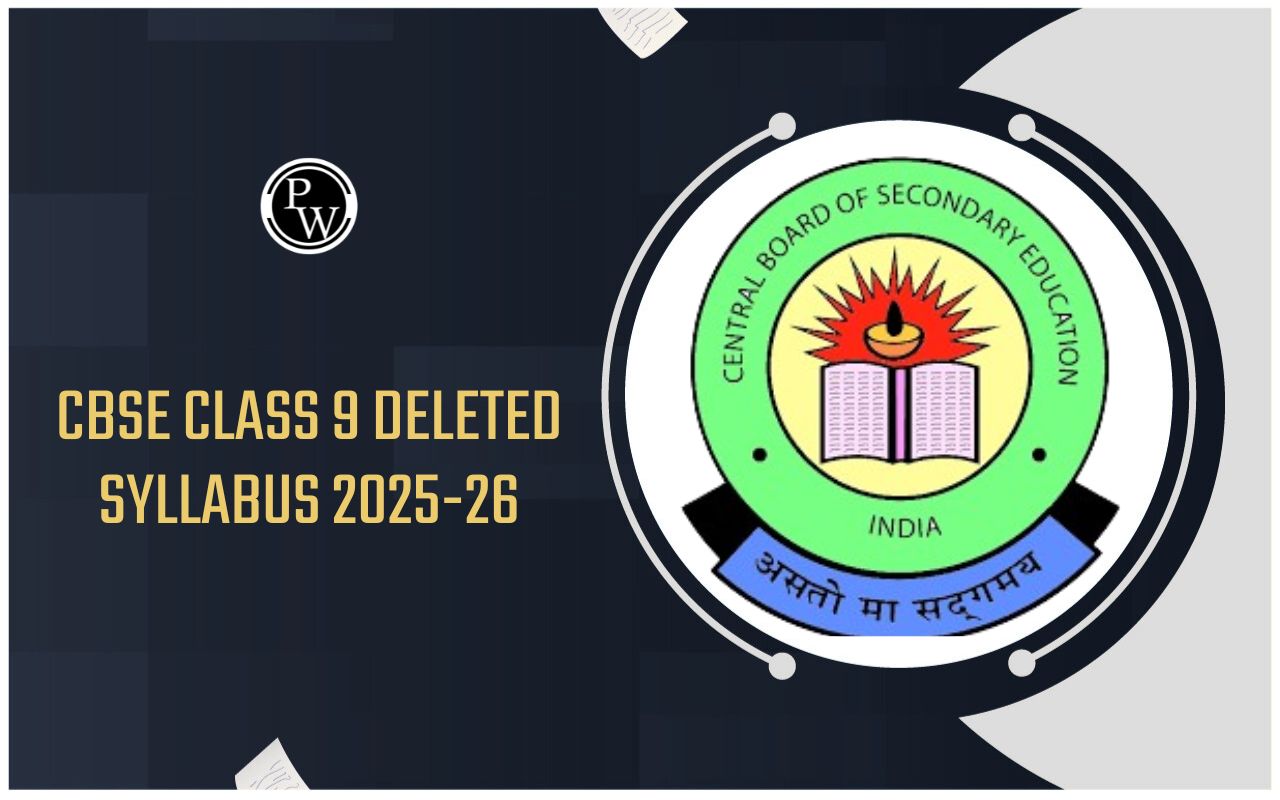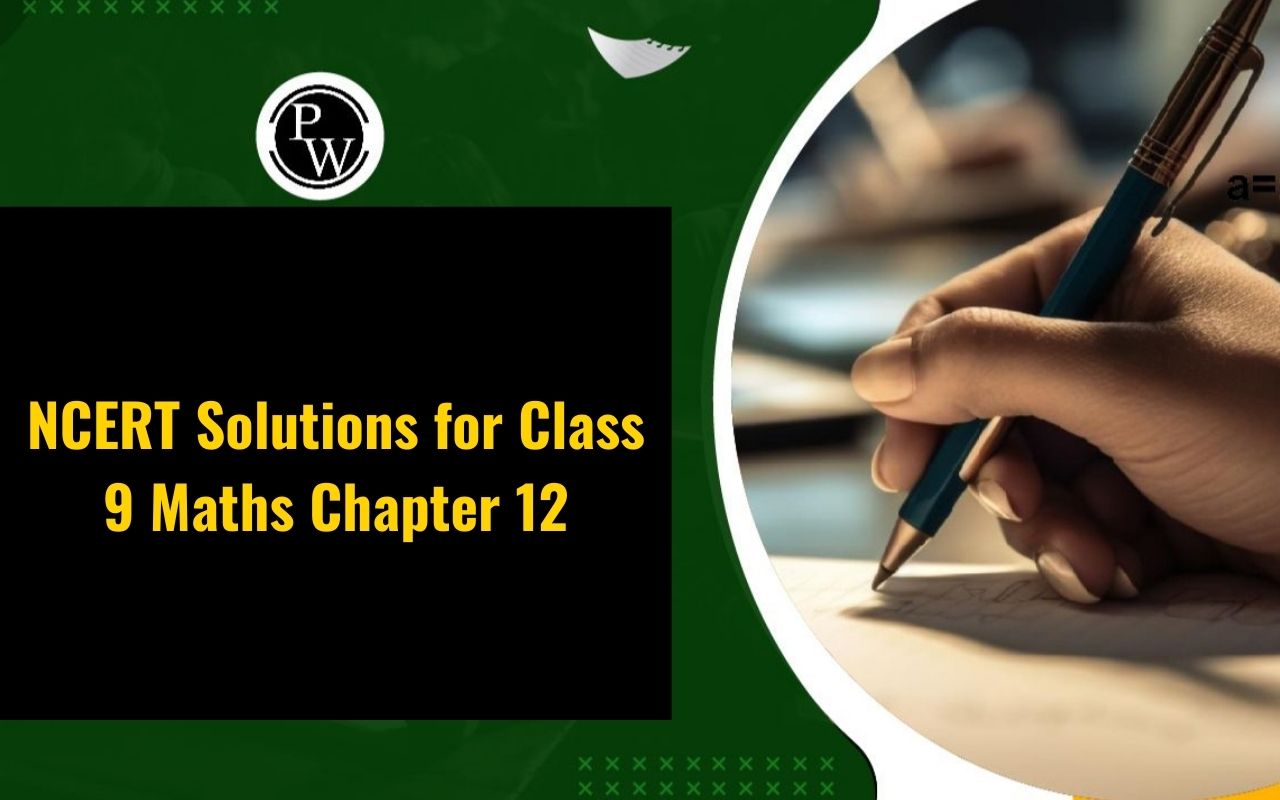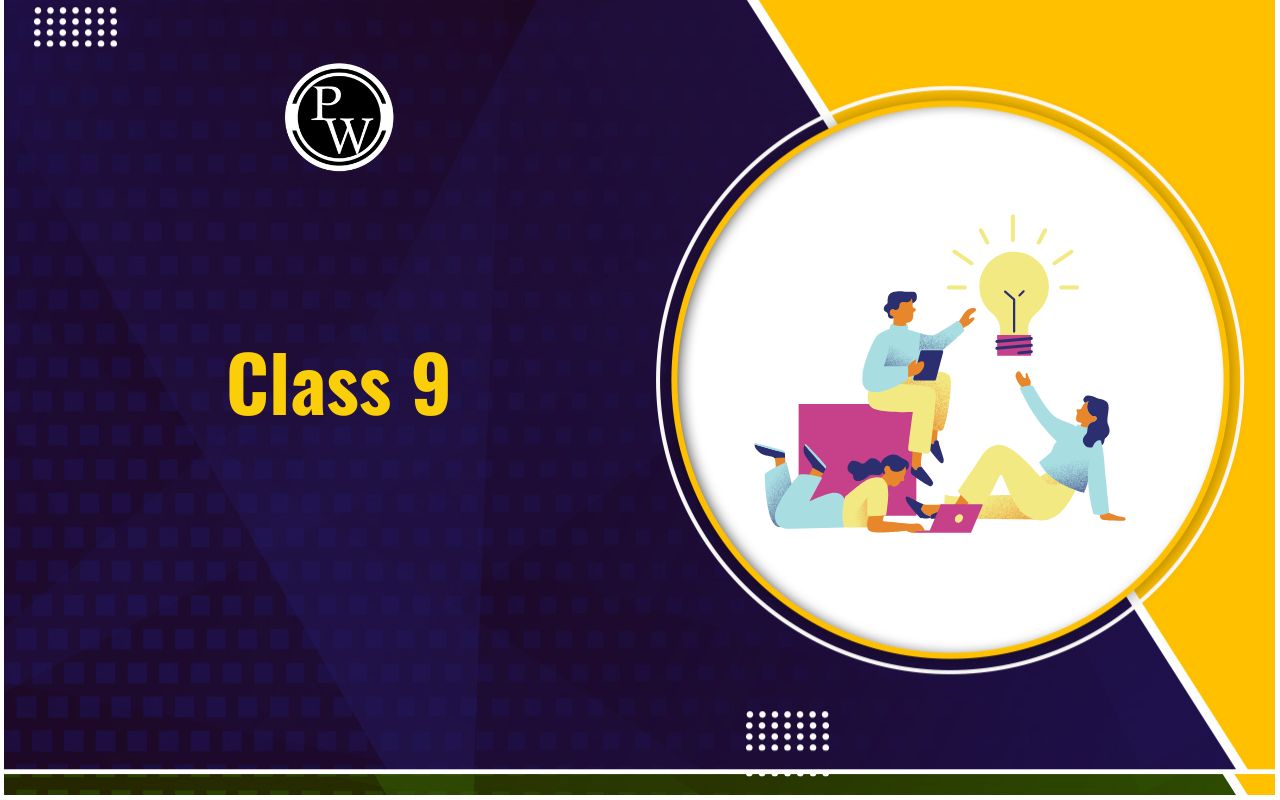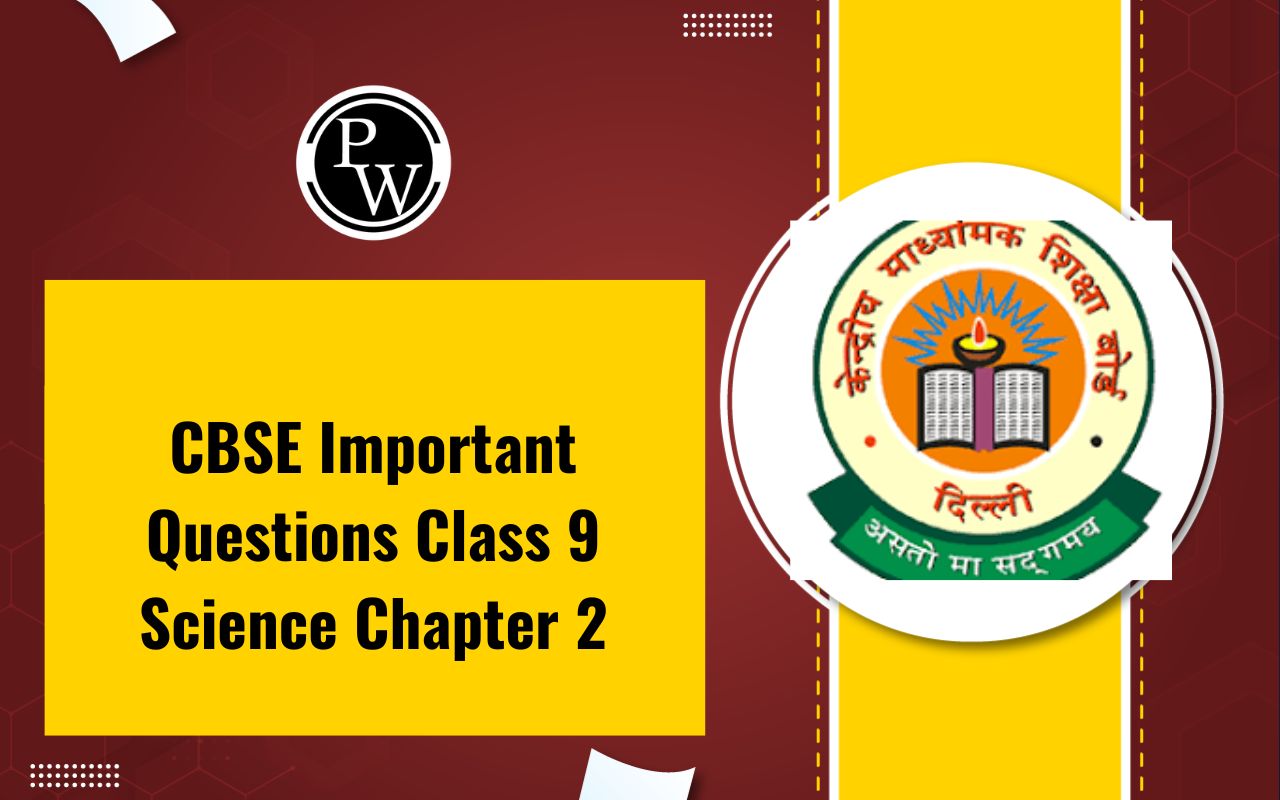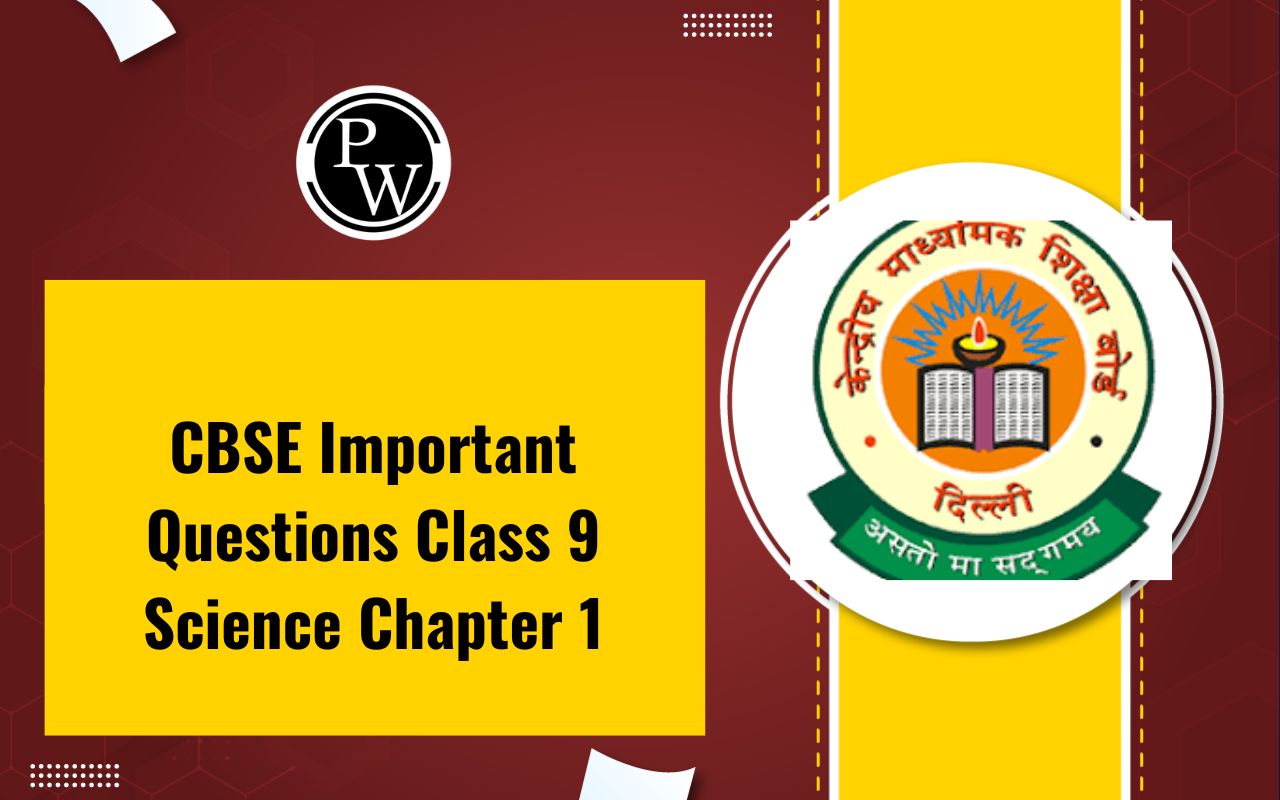
RS Aggarwal Solutions Class 9 Maths Chapter 16: For CBSE students, RS Aggarwal Solutions Class 9 Ch 16 is designed to help them comprehend the idea behind the chapter's tabular data representation. The goal of organizing the complex data in a tabular form is to simplify it. The possibility of receiving higher exam scores increases with comprehension and application of these statistical data.
It includes the chapter-by-chapter questions and answers to different kinds of sums found in Class 9 Maths Chapter 16. The high-quality study materials are created under the direction of mentors, instructors, and specialists who provide their expertise and experience in the exercise design. The RS Aggarwal Class 9 Maths Chapter 16 Solutions should be consulted by students as they get ready for class.RS Aggarwal Solutions Class 9 Maths Chapter 16
Here is Chapter 16 Solution by RS Aggarwal’s class 9. Please use these as a reference only; do not duplicate the solutions. Maths is a practice topic. Use Physics Wallah’s NCERT solutions for class 9 Maths to help you solve problems from the NCERT Exercise.RS Aggarwal Solutions Class 9 Maths Chapter 16 Presentation of Data in Tabular Form
Question 1:
Answer:
Statistics is the science that deals with the collection, presentation, analysis, and interpretation of numerical data.Question 2:
Statistics is the science that deals with the collection, presentation, analysis, and interpretation of numerical data.Answer:
The fundamental characteristics of data (statistics) are as follows: (i) Numerical facts alone constitute data. (ii) Qualitative characteristics like intelligence and poverty, which cannot be measured numerically, do not form data. (iii) Data are aggregates of facts. A single observation does not form data. (iv) Data collected for a definite purpose may not be suited for another purpose. (v) Data in different experiments are comparable.Question 3:
The fundamental characteristics of data (statistics) are as follows: (i) Numerical facts alone constitute data. (ii) Qualitative characteristics like intelligence and poverty, which cannot be measured numerically, do not form data. (iii) Data are aggregates of facts. A single observation does not form data. (iv) Data collected for a definite purpose may not be suited for another purpose. (v) Data in different experiments are comparable.Answer:
Primary data: The data collected by the investigator himself with a definite plan in mind are known as primary data. Secondary data: The data collected by someone other than the investigator is known as secondary data. Primary data are highly reliable and relevant because they are collected by the investigator himself with a definite plan in mind, whereas secondary data are collected with a purpose different from that of the investigator and may not be fully relevant to the investigation.Question 4:
Primary data: The data collected by the investigator himself with a definite plan in mind are known as primary data. Secondary data: The data collected by someone other than the investigator are known as secondary data. Primary data are highly reliable and relevant because they are collected by the investigator himself with a definite plan in mind, whereas secondary data are collected with a purpose different from that of the investigator and may not be fully relevant to the investigation.Answer:
(i) Variate: Any character that is capable of taking several different values is called a variant or a variable. (ii) Class interval: Each group into which the raw data is condensed is called a class interval. (iii) Class size: The difference between the true upper limit and the true lower limit of a class is called its class size. (iv) Class mark of a class: The class mark is given by Upper limit+Lower limit2. (v) Class limit: Each class is bounded by two figures, which are called class limits. (vi) True class limits: In the exclusive form, the upper and lower limits of a class are respectively known as true upper limit and true lower limit. In the inclusive form of frequency distribution, the true lower limit of a class is obtained by subtracting 0.5 from the lower limit, and the true upper limit of the class is obtained by adding 0.5 to the upper limit. (vii) Frequency of a class: The frequency of a class is the number of times an observation occurs in that class. (viii) Cumulative frequency of a class: Cumulative frequency of a class is the total of all the frequencies up to and including that class.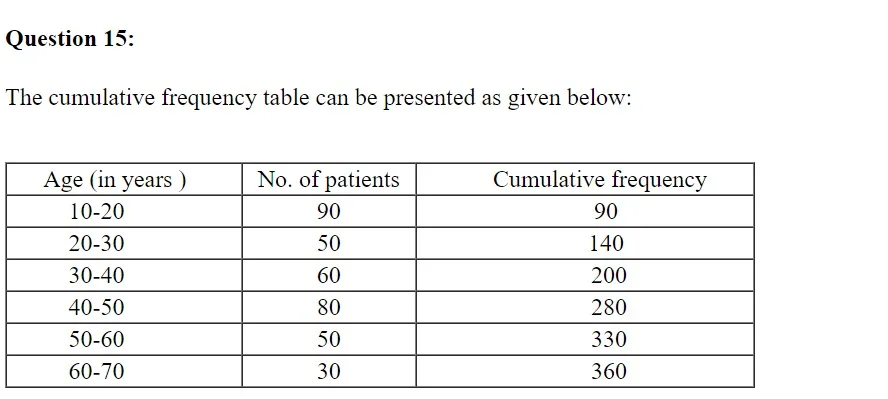

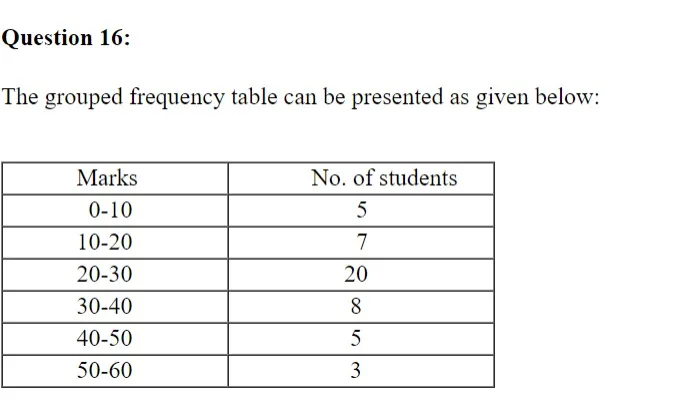
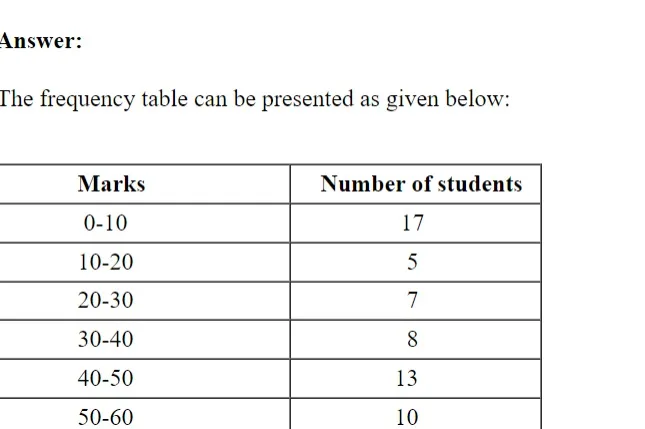
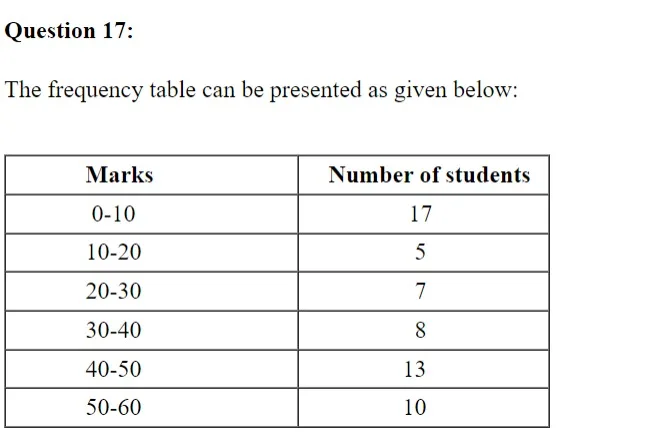
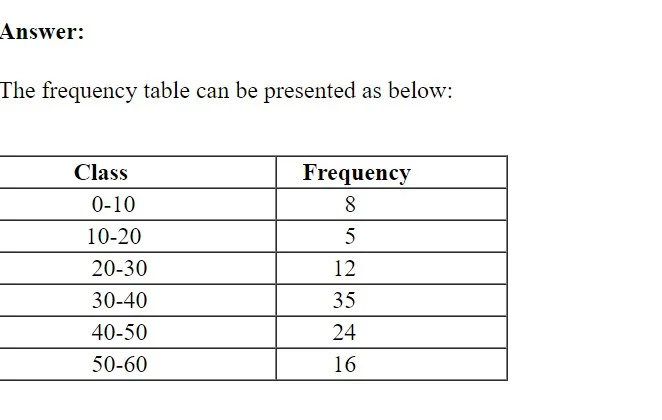
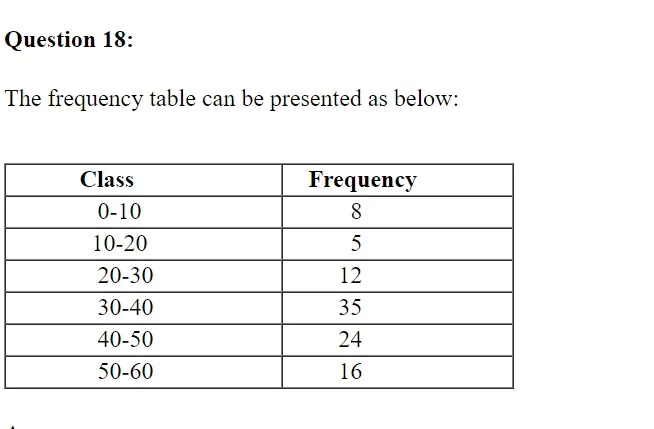
Answer:
Range = Maximum value - minimum value = 100 - 46 = 54 Thus, the range is 54.Question 19:
Range = Maximum value - minimum value
= 100 - 46 = 54
Thus, the range is 54.

Answer:
(i) class mark=upper limit+lower limit2=120+902=2102=105 (ii) mid-value = 10 width = 6 Let the lower limit of the class be x . upper limit = x + 6 class mark/mid-value=upper limit+lower limit2 (iii) width = 5 lower class limit of lowest class = 10 The classes will be 10-15, 15-20, 20-25, 25-30, 30-35. The upper class limit of the highest class = 35. (iv) Class marks = 15, 20, 25, ... class size = 20 - 15 = 5 Let the lower limit of class be x . Thus, the class is 17.5-22.5. (v) 20 will be included in the class interval 20-30.
Question 2:
(d) 26 We have: Maximum value = 32 Minimum value = 6 We know: Range = Maximum value - Minimum value =32 - 6 =26Answer:
(b) 110 Classmark = Upper limit+Lower limit2=120+1002=110Question 3:
(b) 110 Classmark = Upper limit+Lower limit2=120+1002=110Answer:
(b) 20−30 This is the continuous form of frequency distribution. Here, the upper limit of each class is excluded, while the lower limit is included. So, the number 20 is included in the class interval 20−30.Question 4:
(b) 20−30 This is the continuous form of frequency distribution. Here, the upper limit of each class is excluded, while the lower limit is included. So, the number 20 is included in the class interval 20−30. Answer:
(b) 17.5-22.5
We are given frequency distribution 15, 20, 25, 30,...
Class size = 20 - 15 = 5
Classmarks = 20
Now,
Lower limit=20-52=352=17.5Upper limit =20+52=452=22.5
Thus, the required class is 17.5-22.5.
Benefits of RS Aggarwal Solutions Class 9 Maths Chapter 16
There are numerous applications for class 9 maths solutions. Here's how these strategies support students academically:- When students are confused and unable to solve an issue, they allow them to squander a lot of time.
- They make it possible for the pupils to recognize their errors and comprehend their stupidity.
- The step-by-step explanation of these answers aids in the student's understanding of the problem as a whole and its solution.
- An extensive comprehension of the ideas and their significance is provided by the solutions.
| CBSE Class 9 Maths Syllabus | CBSE Class 9 Science Syllabus |
| CBSE Class 9 Computer Application Syllabus | CBSE Class 9 Social Science Syllabus |
RS Aggarwal Solutions Class 9 Maths Chapter 16 FAQs
Which chapter is important in maths class 9?
The highest scoring chapter is Polynomials. If you want to clear your exam with flying results, you need to prepare this chapter well. Practice as many questions as you can, calculation mistakes are a major factor in this chapter.
Is RS Aggarwal easy?
Solving all the problems of RS Aggarwal is a privilege of the highest order! However, not all problems are easy to solve.
Is RS Aggarwal enough for board?
Yes RS Aggarwal and NCERT is sufficient for class 10th for scoring 95+ . Even if you do NCERT 3 to 5 times then you can score 95+ marks.
Talk to a counsellorHave doubts? Our support team will be happy to assist you!

Check out these Related Articles
Free Learning Resources
PW Books
Notes (Class 10-12)
PW Study Materials
Notes (Class 6-9)
Ncert Solutions
Govt Exams
Class 6th to 12th Online Courses
Govt Job Exams Courses
UPSC Coaching
Defence Exam Coaching
Gate Exam Coaching
Other Exams
Know about Physics Wallah
Physics Wallah is an Indian edtech platform that provides accessible & comprehensive learning experiences to students from Class 6th to postgraduate level. We also provide extensive NCERT solutions, sample paper, NEET, JEE Mains, BITSAT previous year papers & more such resources to students. Physics Wallah also caters to over 3.5 million registered students and over 78 lakh+ Youtube subscribers with 4.8 rating on its app.
We Stand Out because
We provide students with intensive courses with India’s qualified & experienced faculties & mentors. PW strives to make the learning experience comprehensive and accessible for students of all sections of society. We believe in empowering every single student who couldn't dream of a good career in engineering and medical field earlier.
Our Key Focus Areas
Physics Wallah's main focus is to make the learning experience as economical as possible for all students. With our affordable courses like Lakshya, Udaan and Arjuna and many others, we have been able to provide a platform for lakhs of aspirants. From providing Chemistry, Maths, Physics formula to giving e-books of eminent authors like RD Sharma, RS Aggarwal and Lakhmir Singh, PW focuses on every single student's need for preparation.
What Makes Us Different
Physics Wallah strives to develop a comprehensive pedagogical structure for students, where they get a state-of-the-art learning experience with study material and resources. Apart from catering students preparing for JEE Mains and NEET, PW also provides study material for each state board like Uttar Pradesh, Bihar, and others
Copyright © 2025 Physicswallah Limited All rights reserved.
Get App
